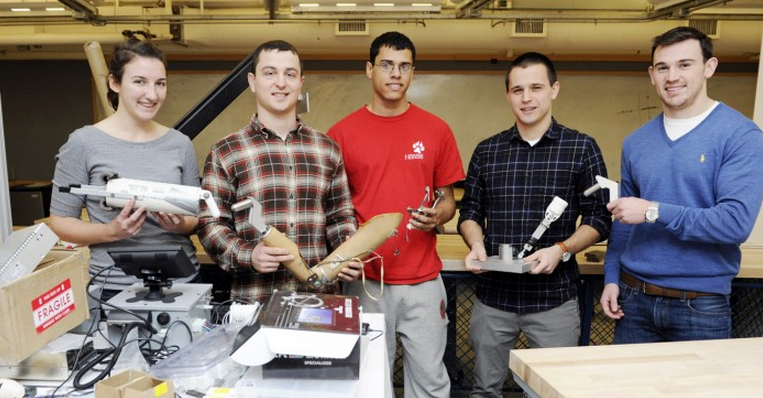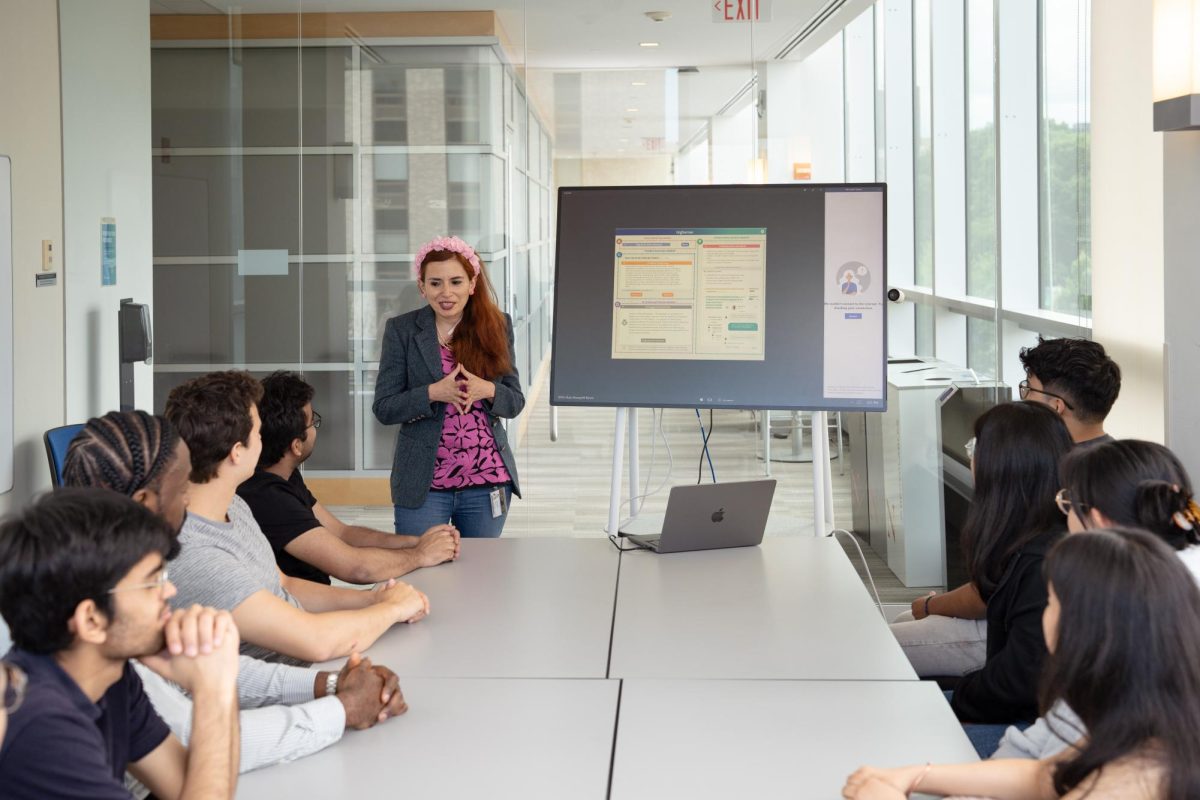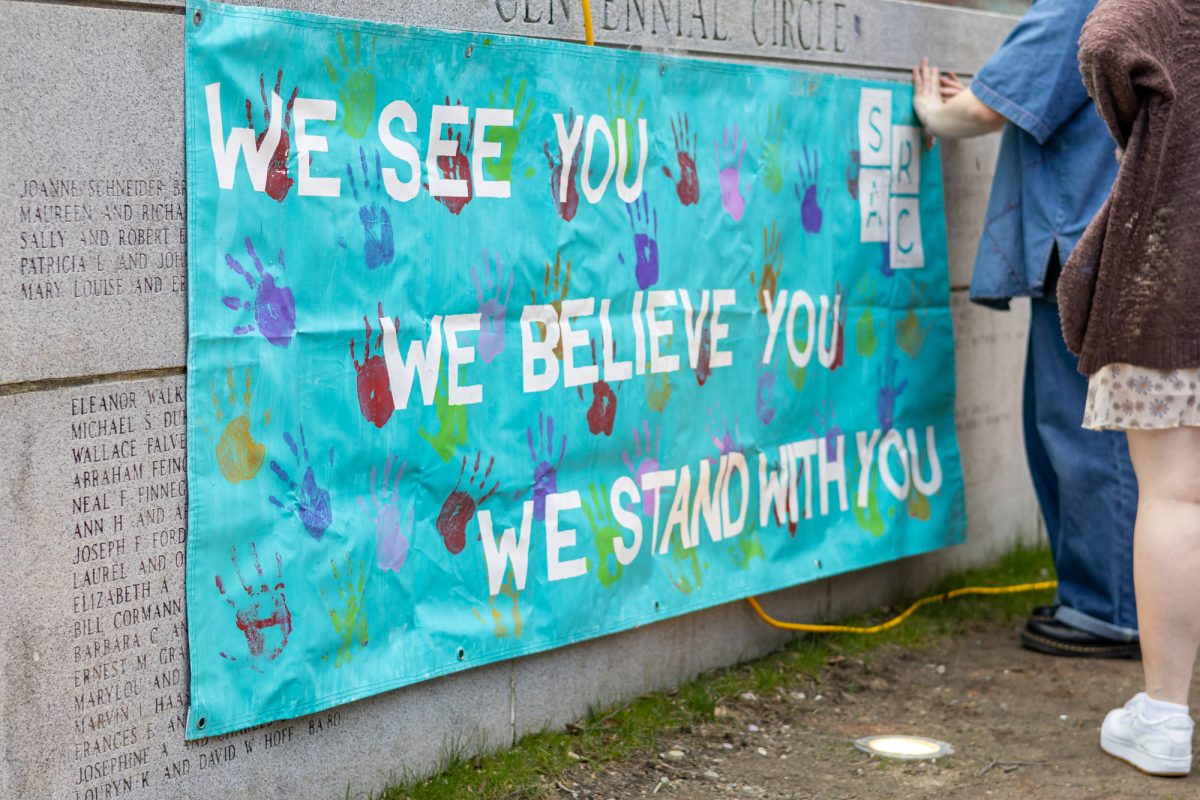By Sam Haas, news correspondent
A group of Northeastern University engineering students have designed prosthetics that could help agricultureworkers with disabilities continue to thrive in the field.
Dubbed the “Farm Arm,” the prosthesis is designed to help agricultural workers with amputations operate machinery. The device features an aluminum body and titanium terminal piece matched with 3D-printed plastic adaptors that clamp onto knobs, levers and steering wheels. This enables farmers with below-the-elbow amputations to drive tractors and operate other machines.
“We found existing prosthetics were not good at the interface between the farmer and the tractor,” senior mechanical engineering major Andrew Waite, one of the five founders, said. “They just fail.”
Most prosthetics on the market do not serve the needs of farmers well and durability, usability, availability and cost are all problems, according to the inventors of Farm Arm.
“The interesting thing about farmers is that it’s their livelihood,” Waite said. “It’s not just their occupation. They live on their farms. It’s literally everything, every part of their lives.”
Along with Waite, Jake Cohen, Carly Gajewski, Jonathan Leydon and Danny Walsh, also senior mechanical engineers, began the project over the summer when they decided to create a task-specific prosthetic.
The project began to take shape when they learned that 11 percent of farmers worldwide suffer from an amputation injury, with one in 200 being a major limb amputation. This led the students to focus on a prosthetic that would allow disabled farmers to operate tractors, Cohen said. They decided to aim for a simple mechanical solution over an electronically-supported design.
“Farmers don’t need batteries and computer chips in their prosthetics,” Waitse said. “They need durable, they need functional.”
After completing a working model, the group connected with Robert Cameron, a farmer in Rumford, Maine, who was the group’s target consumer. Cameron lost part of his arm one year after he bought his farm, and spent the next 45 years farming in spite of his amputation.
Cameron’s testing was the team’s first chance to gauge the effectiveness of its design. Of particular concern, Cohen said, was utility, comfort and overall impression.
“We had him do tasks and give us feedback, we asked him to be as brutally honest as possible,” Waite said. “That provided some good stuff for us to go back and iterate on our design a little more.”
After incorporating Cameron’s experiences into design tweaks, they sent quotes to several prosthetics manufacturers and reached out to agricultural amputee support groups.
Choosing to opt for simplicity aligned well with both the team’s goals and the capstone program’s overall mission, Andrew Gouldstone, associate professor of mechanical and industrial engineering and the group’s advisor, said.
“There’s are tons of simple solutions out there,” Gouldstone said. “I hope capstone is helping students realize it doesn’t have to be swanky; it doesn’t have to be second-generation Iron Man technology.”
Waite and Leydon worked on design, while Gajewski and Walsh handled biochemics and Cohen worked on materials and fabrication.
Cohen said the team hopes to start a nonprofit, potentially obtaining a grant for production, selling the intellectual property and partnering with a big agricultural company like John Deere.
This month, they will attend AgrAbility, a national agricultural amputee support group, on how best to assist farmers with disabilities.
“The biggest thing in our mind is getting it to market as quickly as possible,” Waite said. “We just want to see it on people’s tractors that it will benefit substantially.”
Photo by Matthew Modoono/Northeastern University, courtesy Danny Walsh









